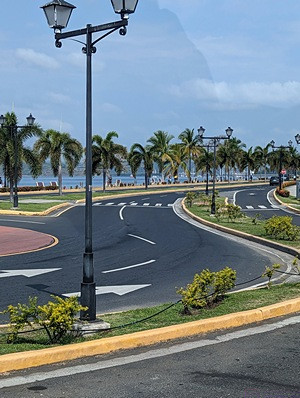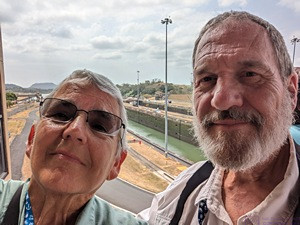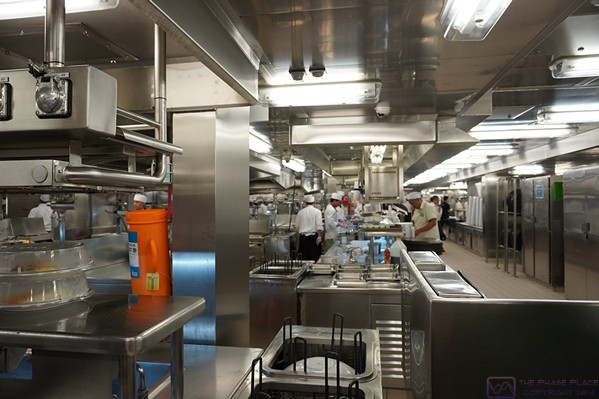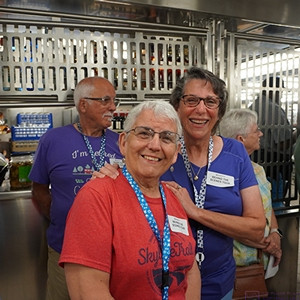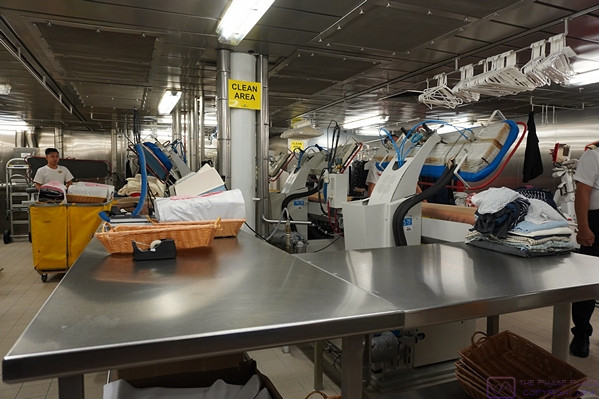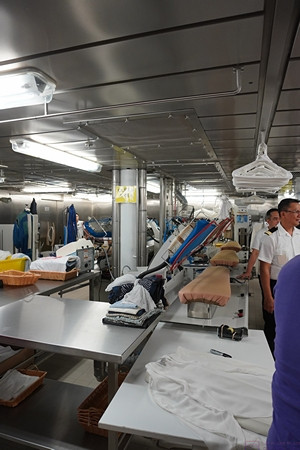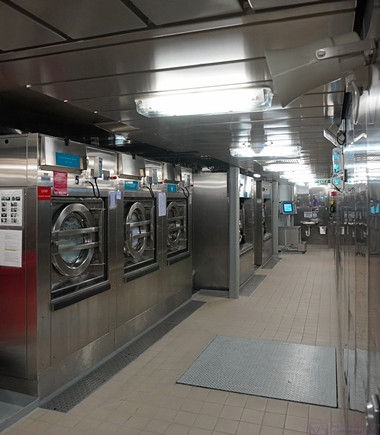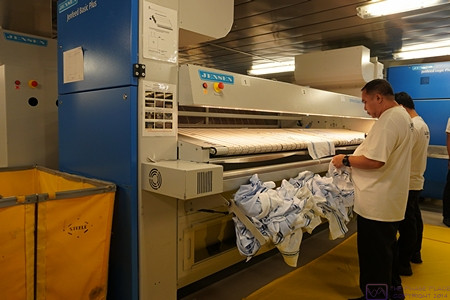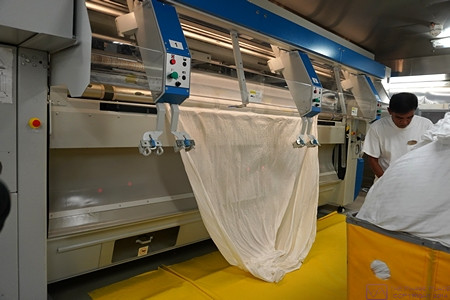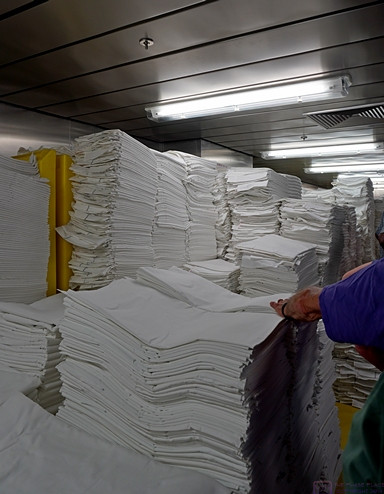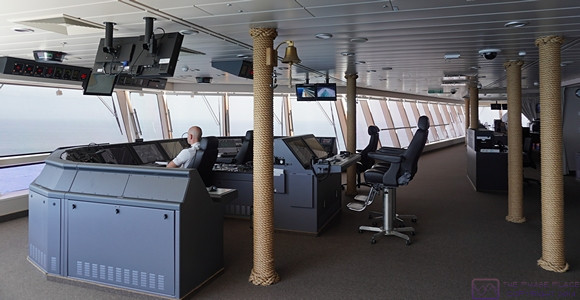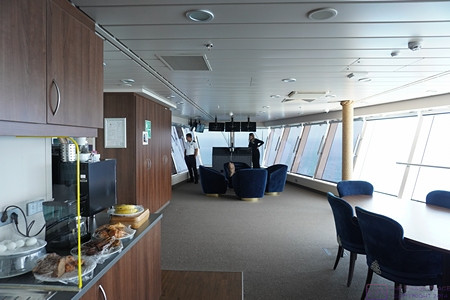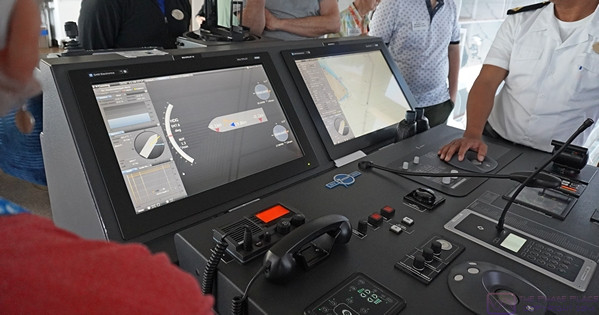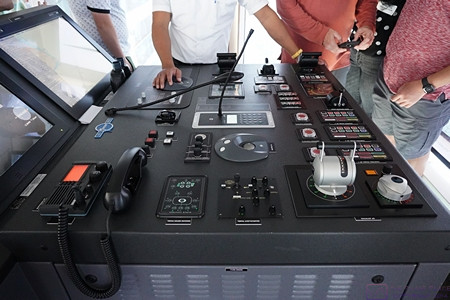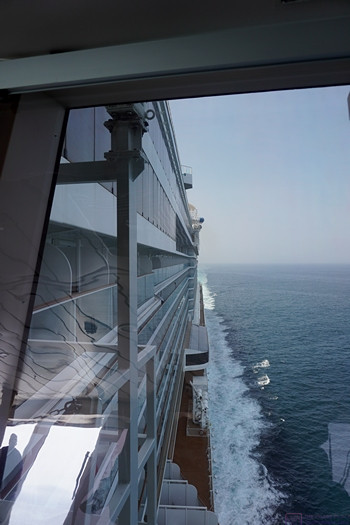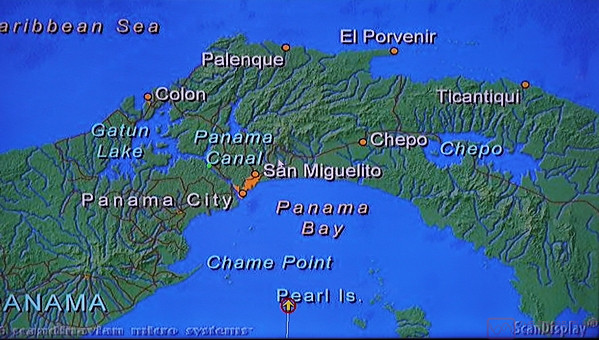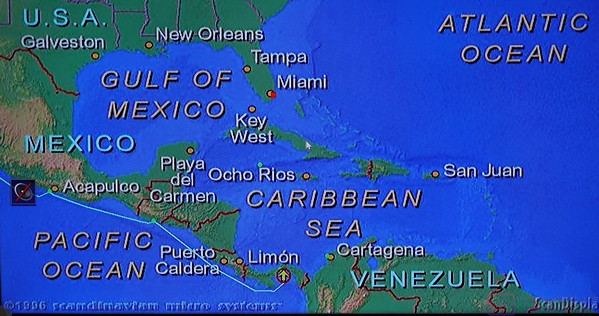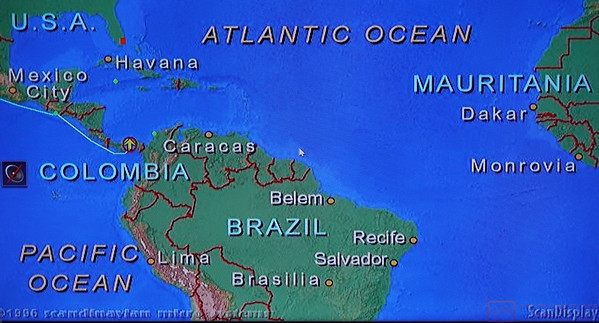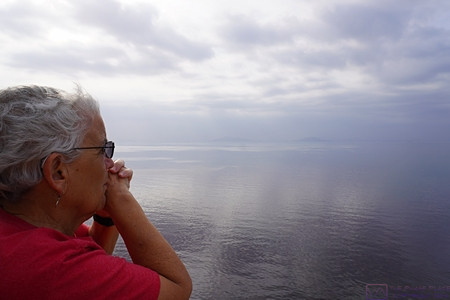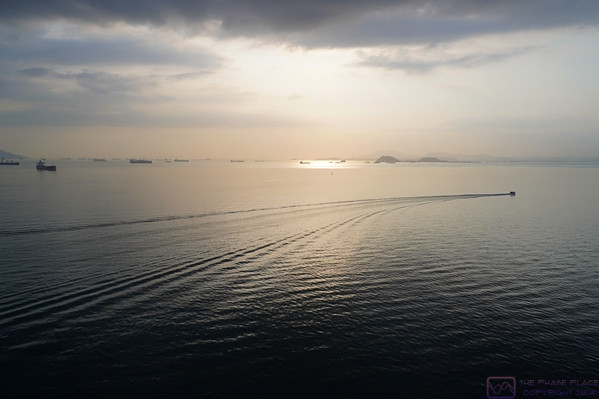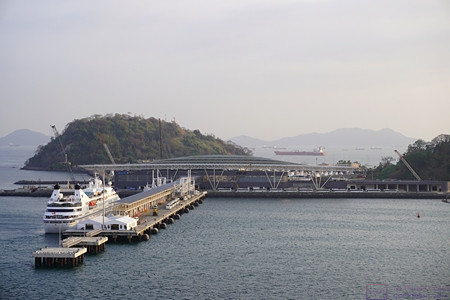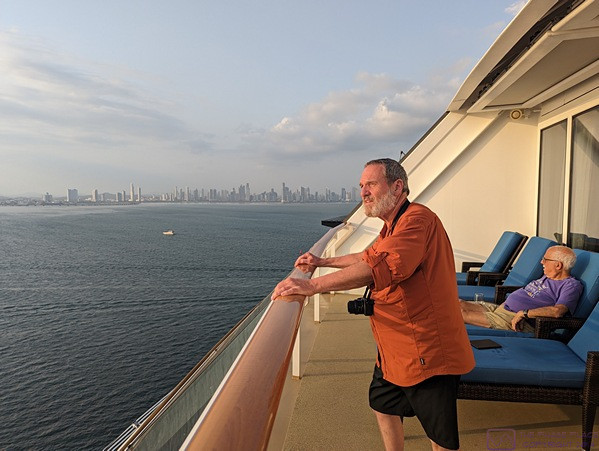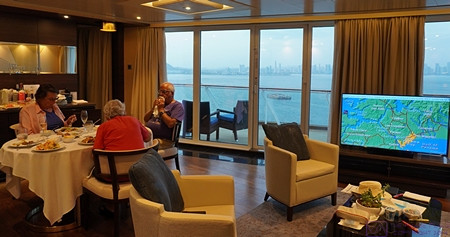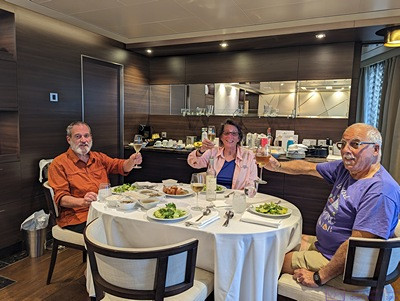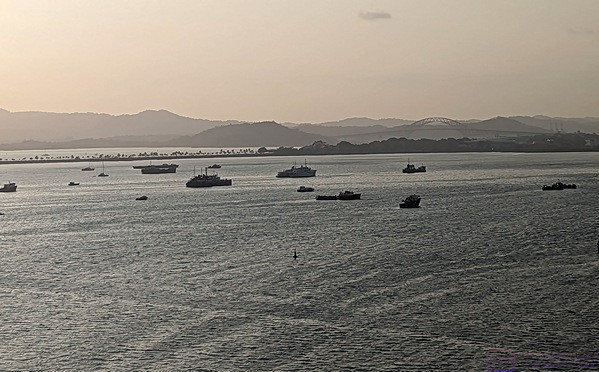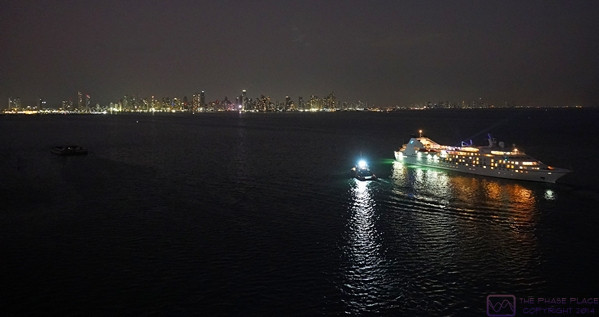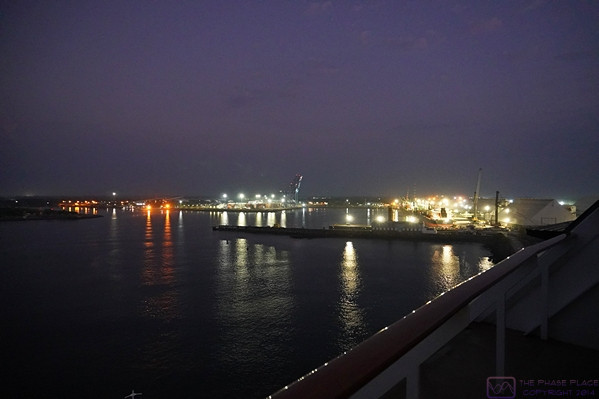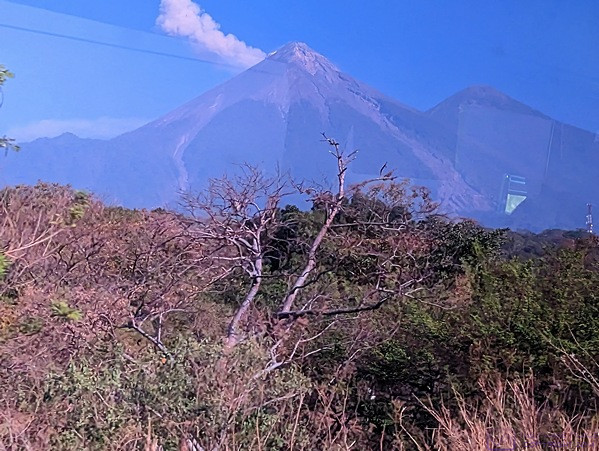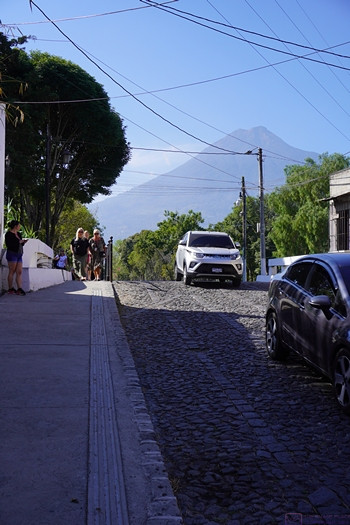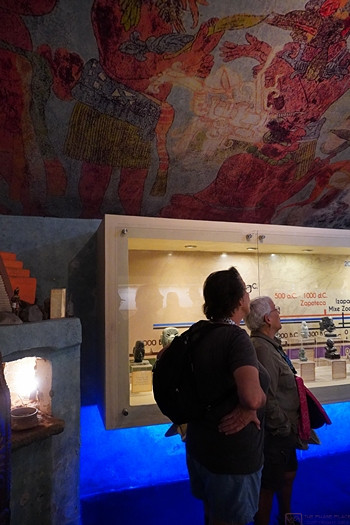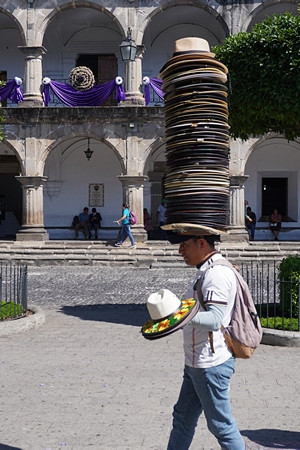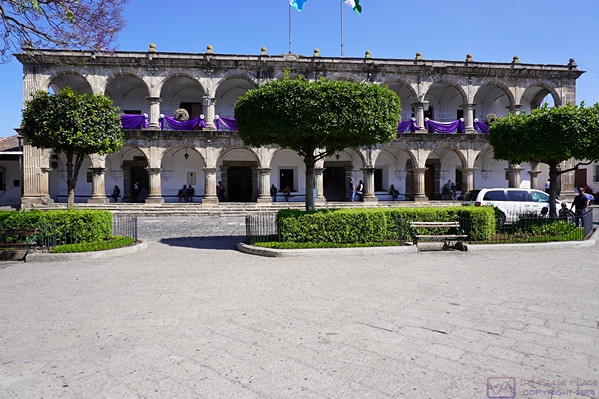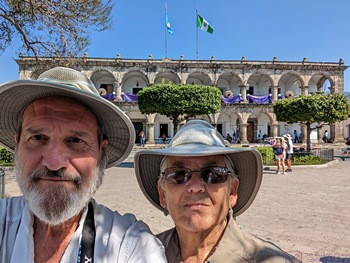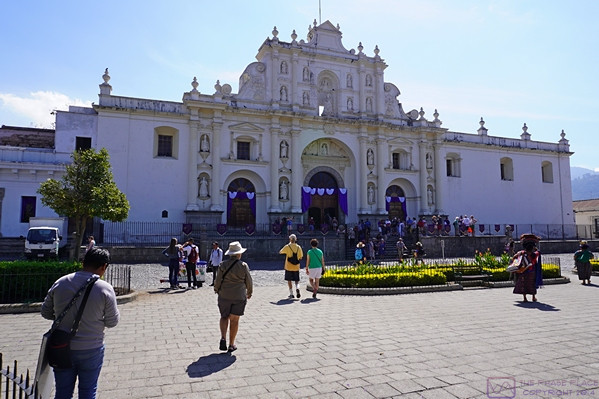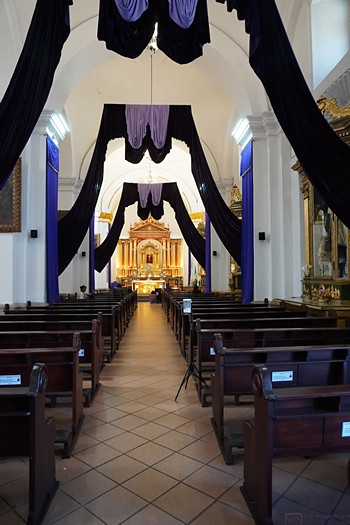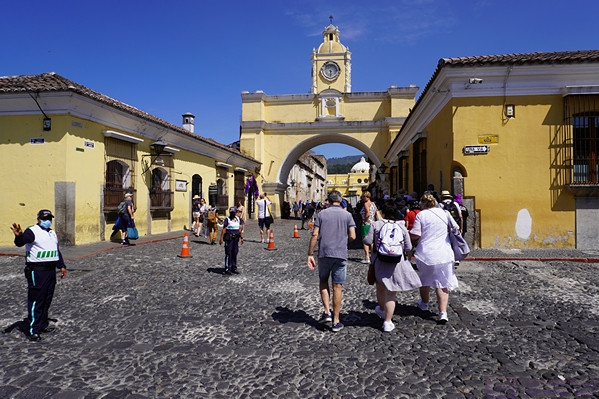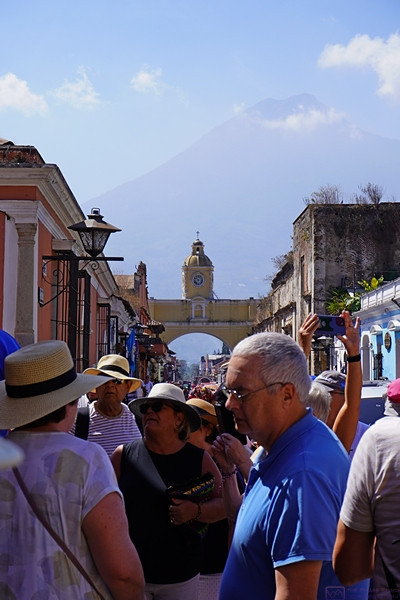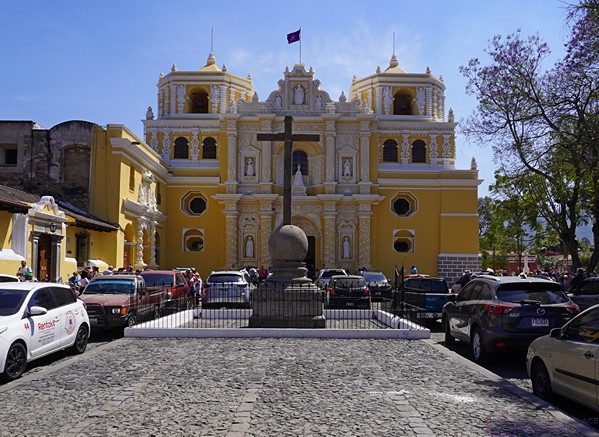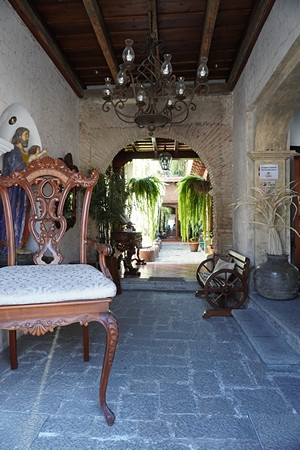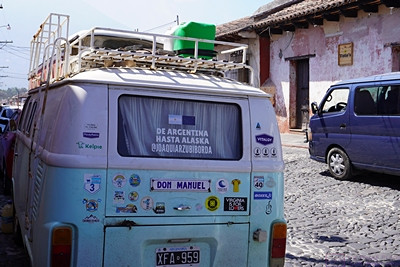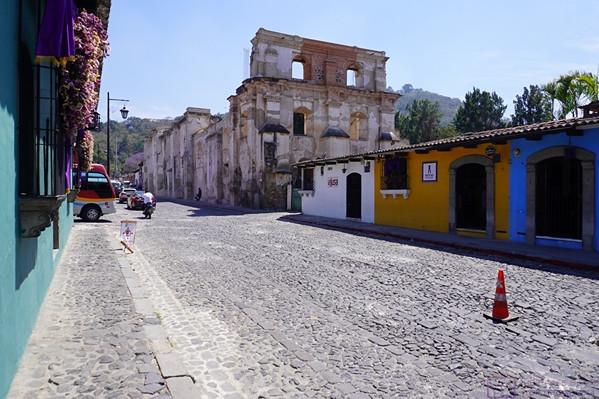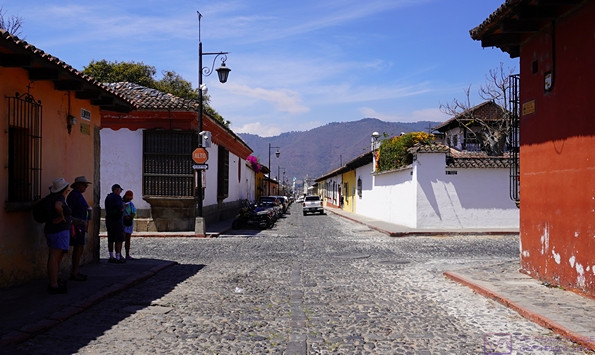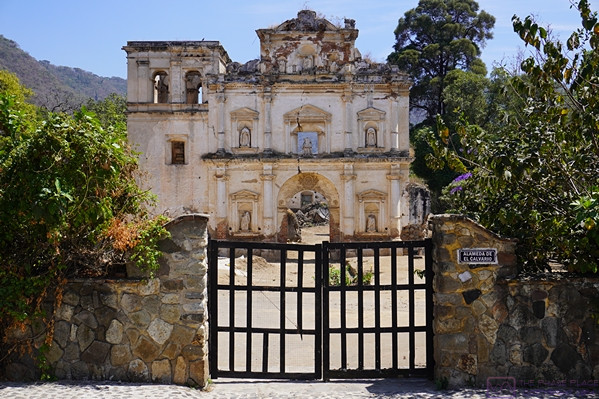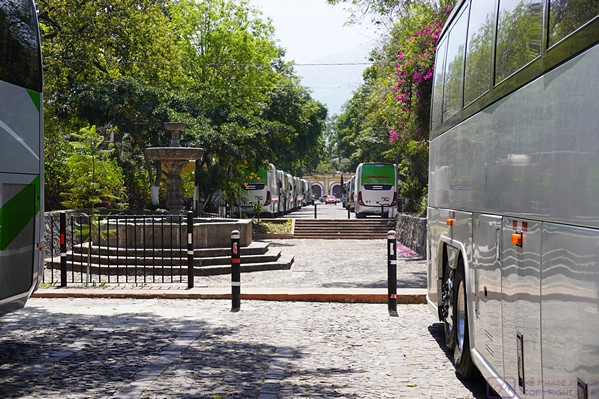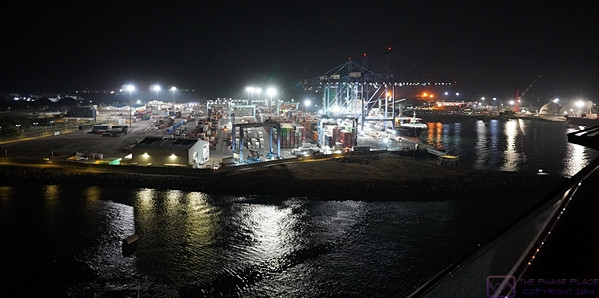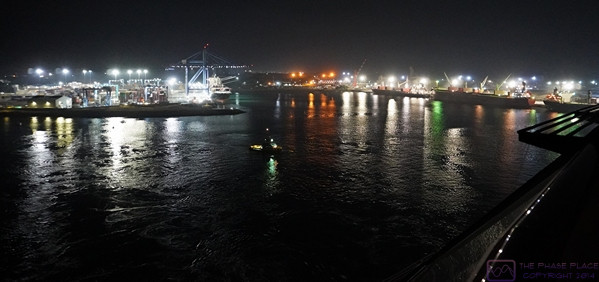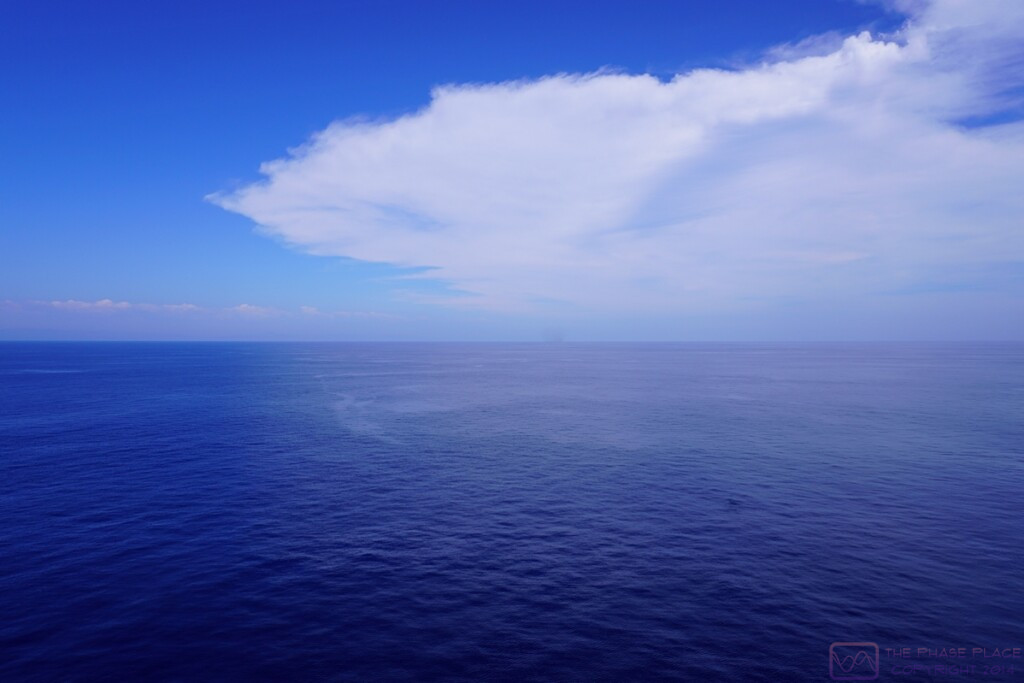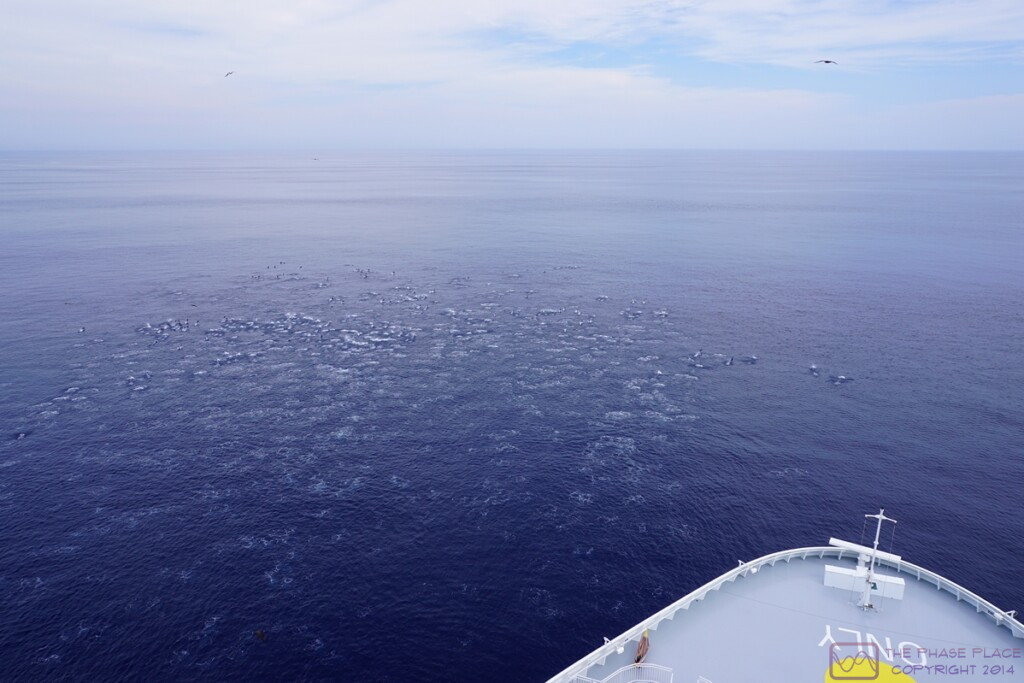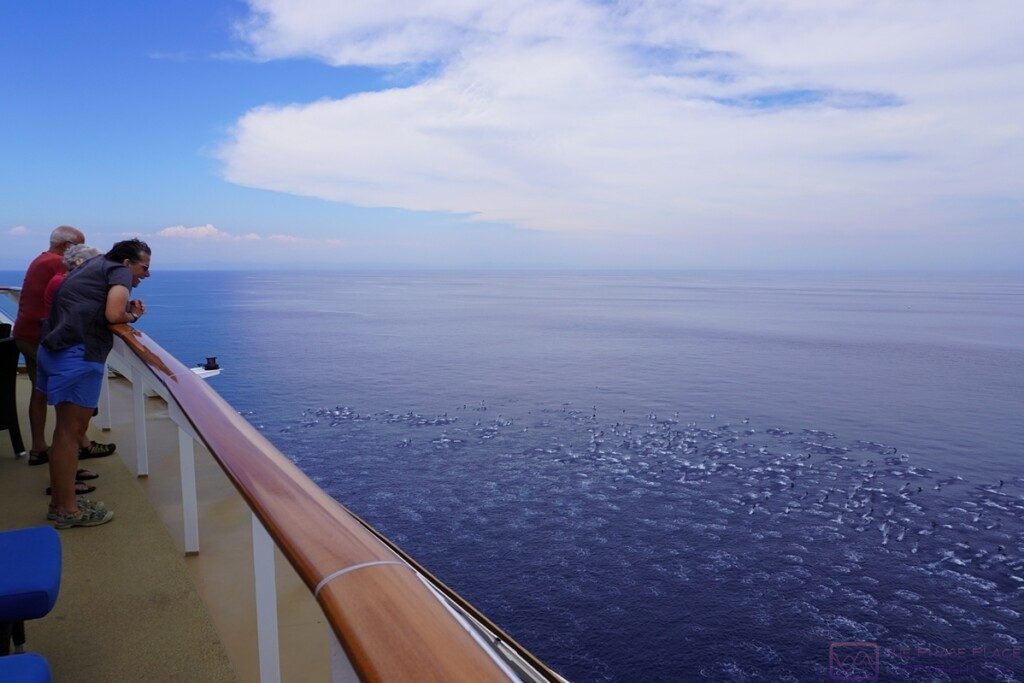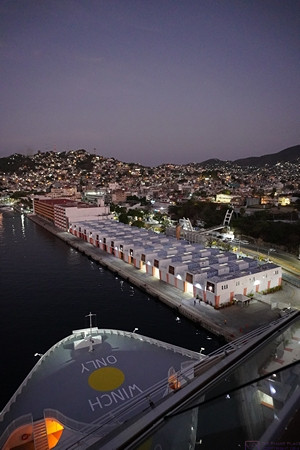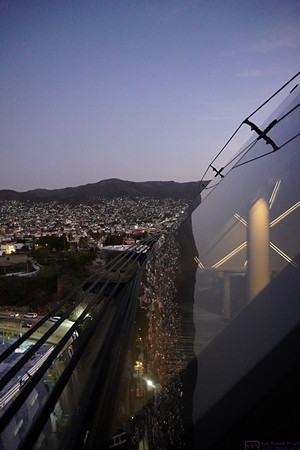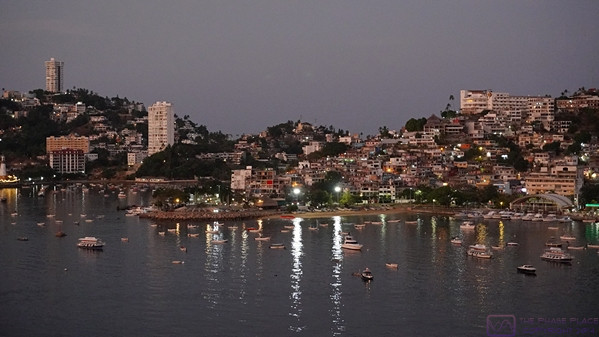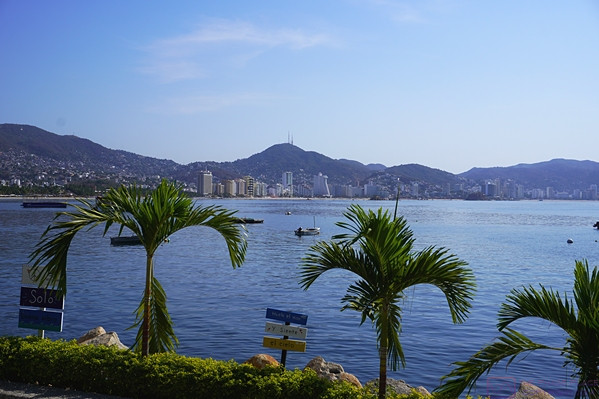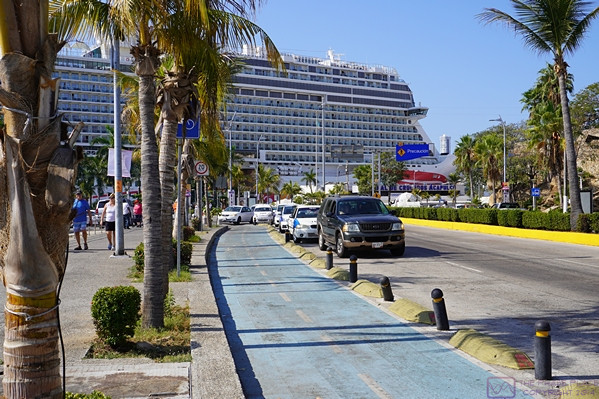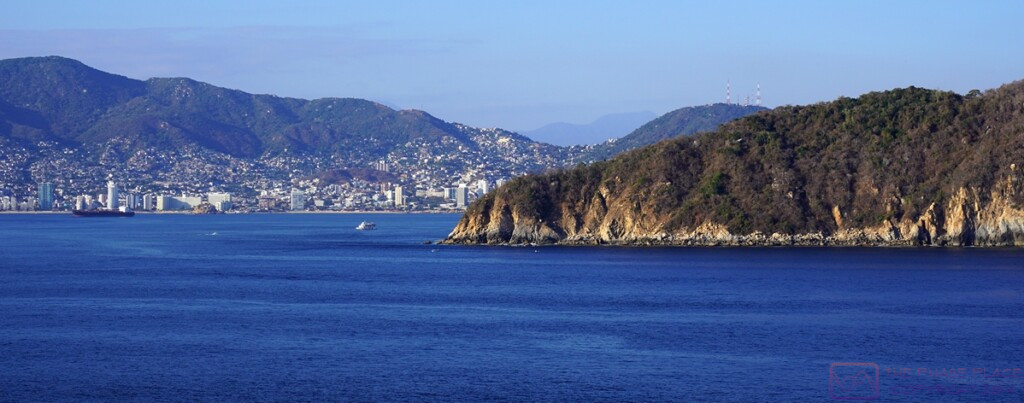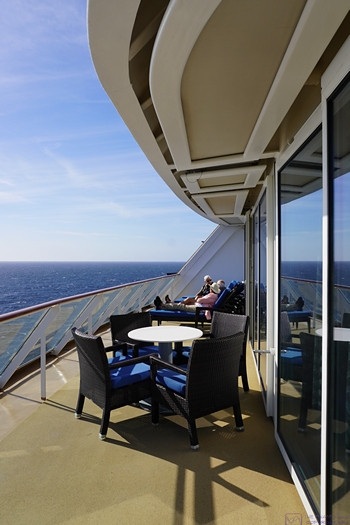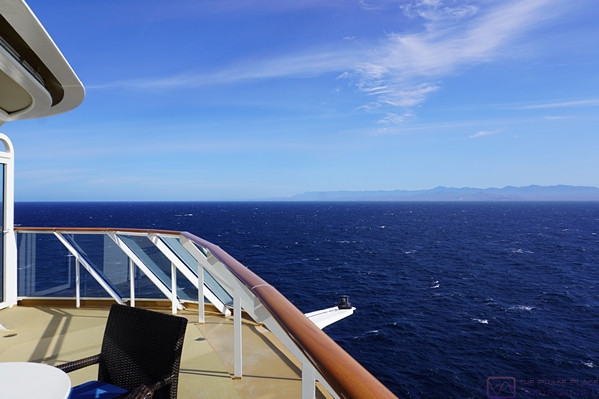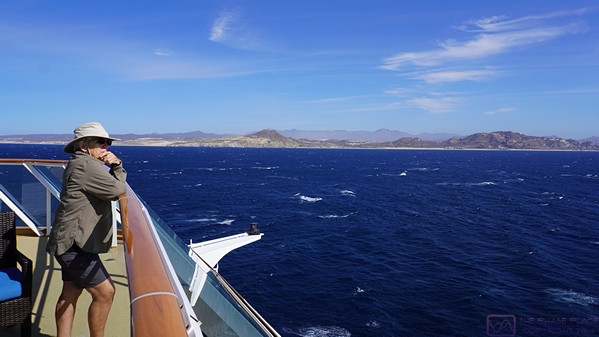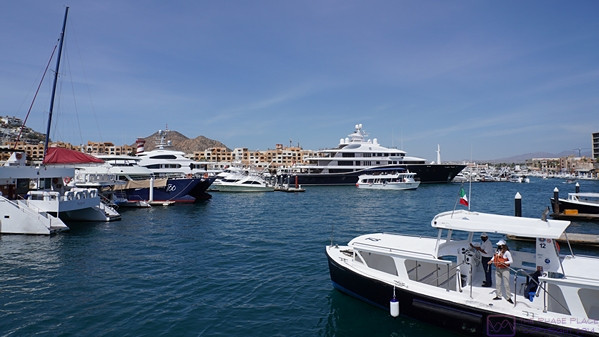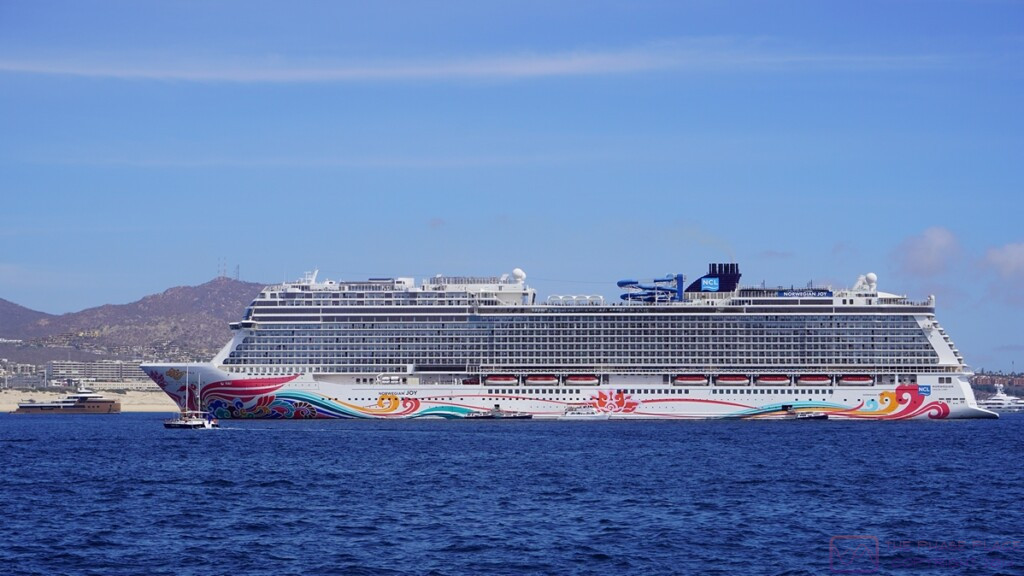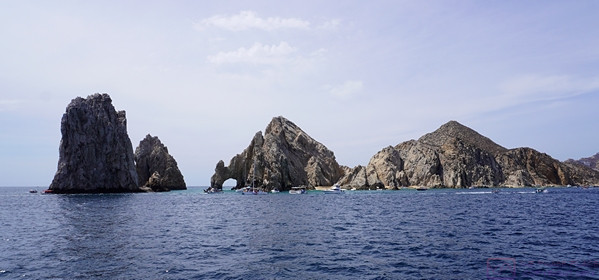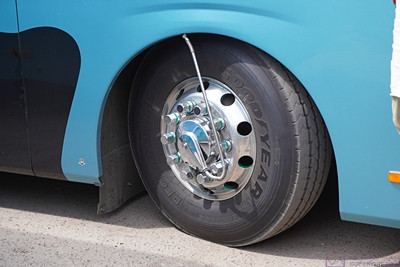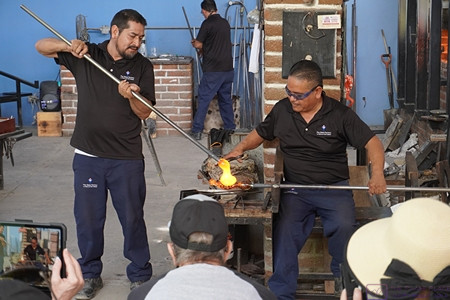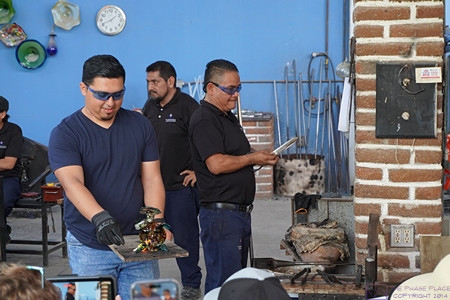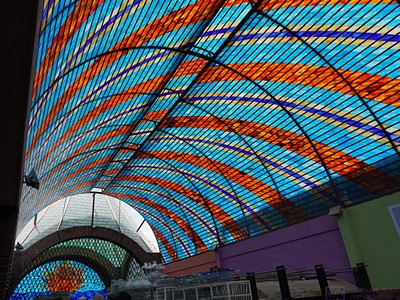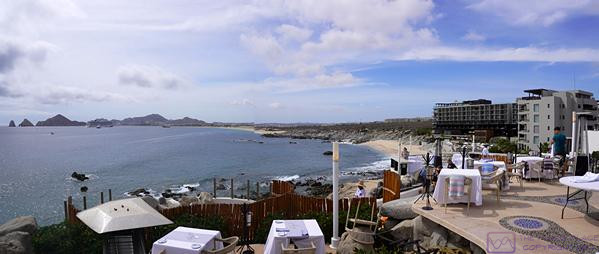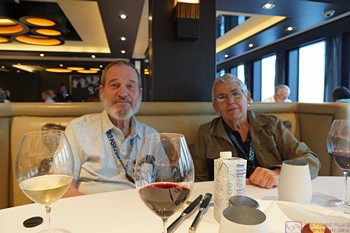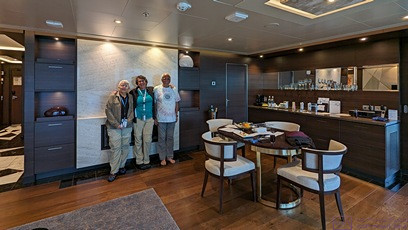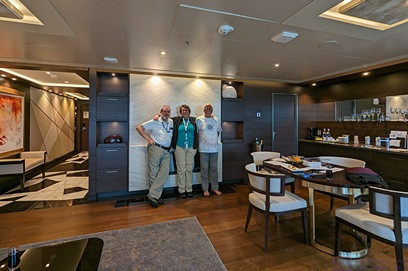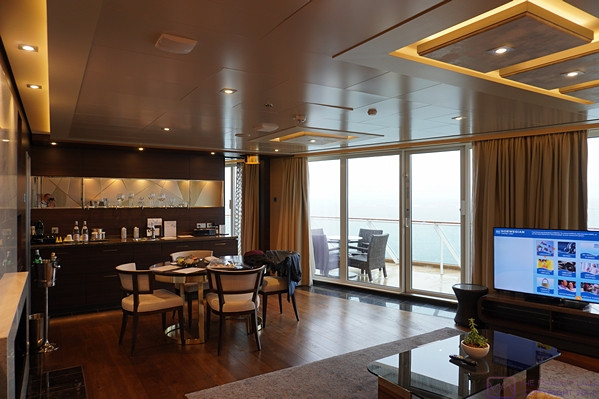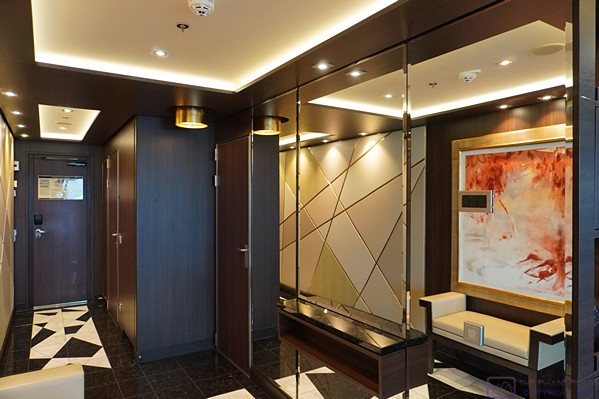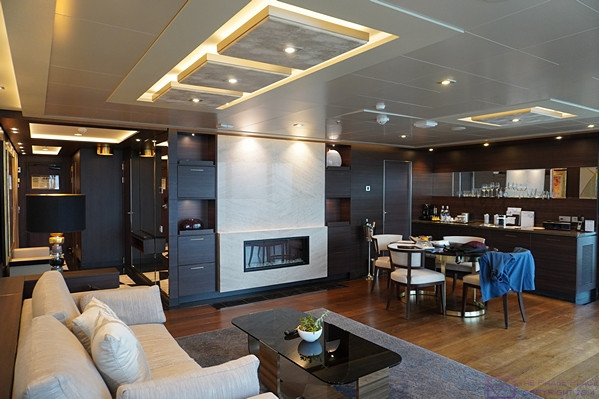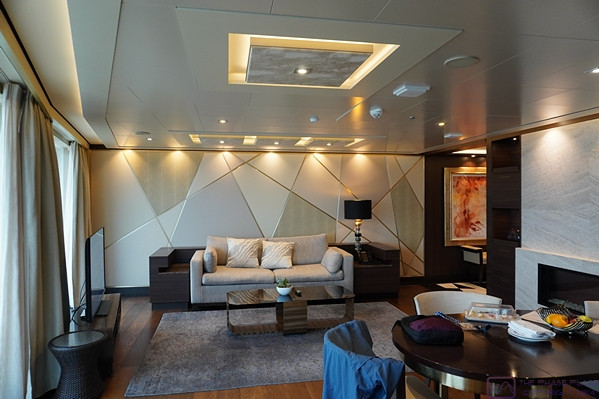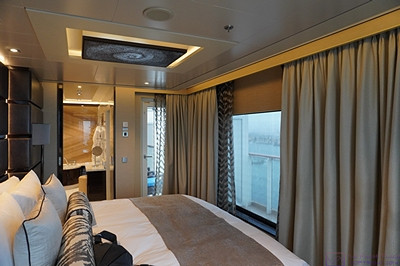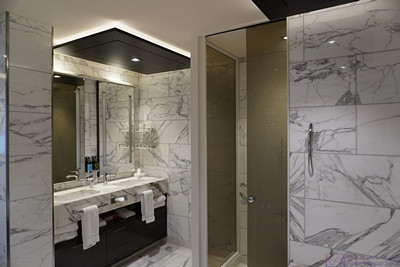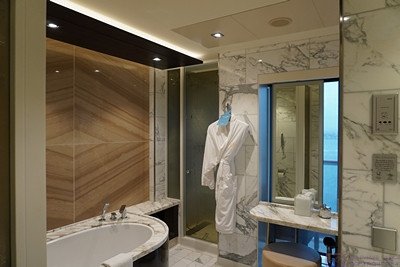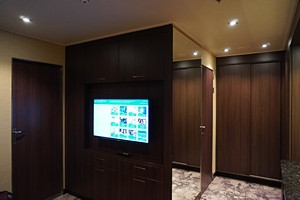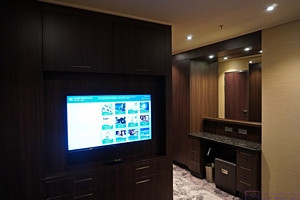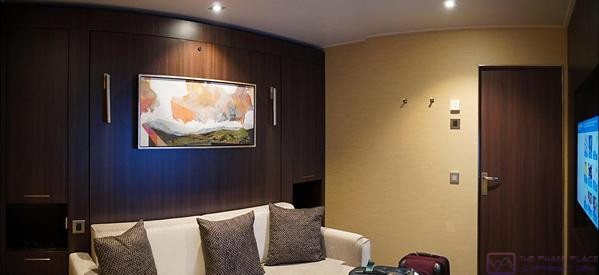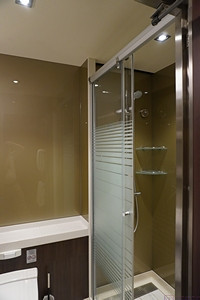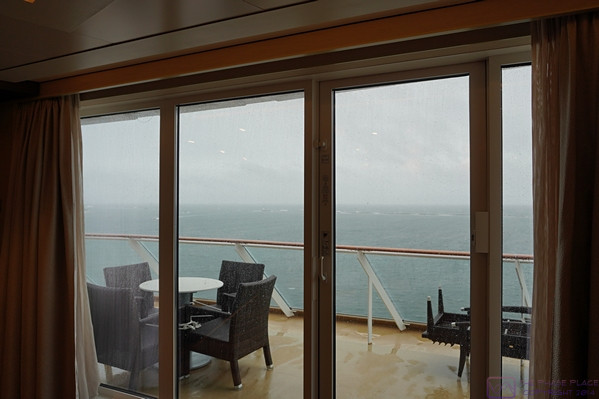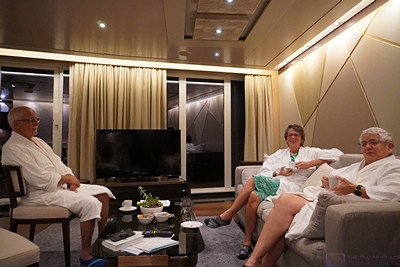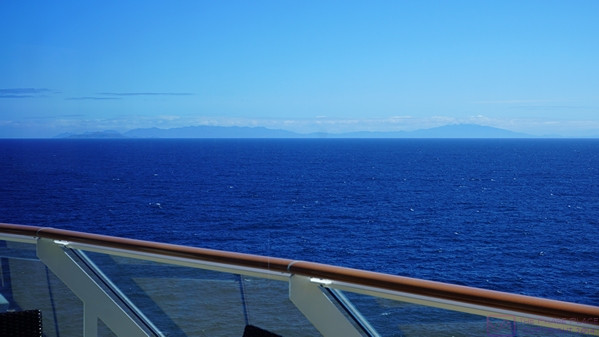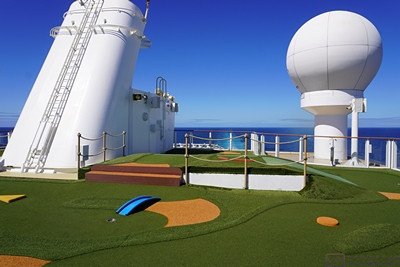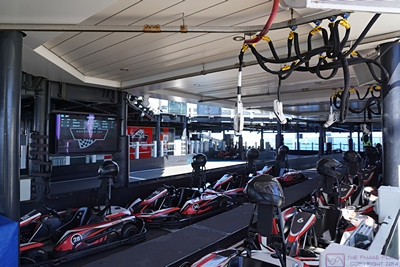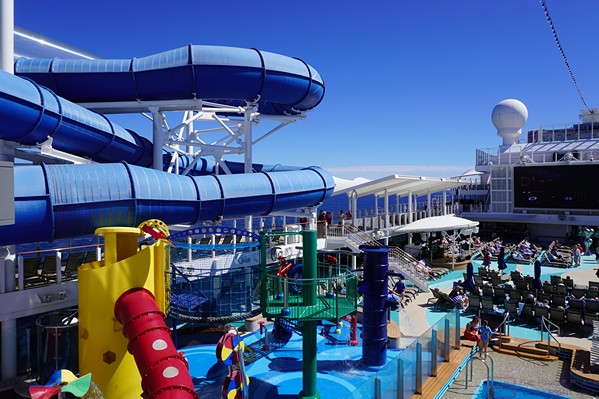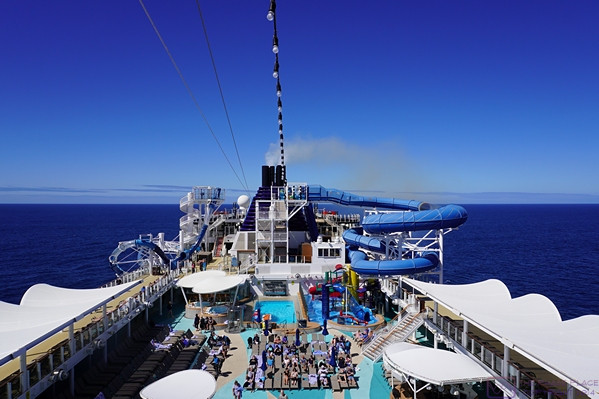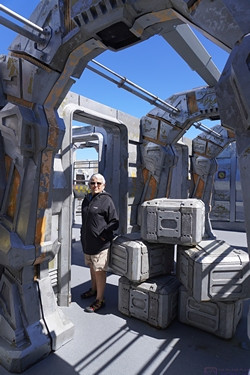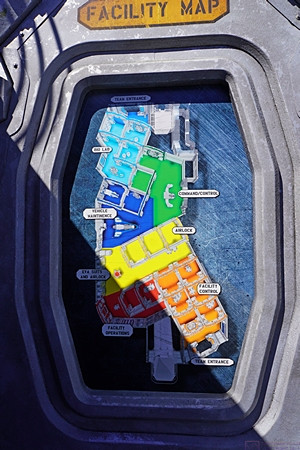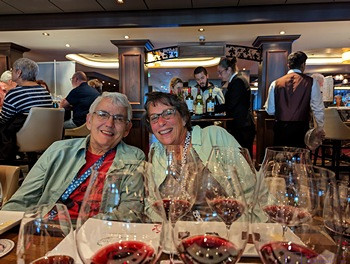[ This post contains 12 photos with captions. ]
SUNDAY 05 March – Panama City, Balboa, and the Panama Canal Zone
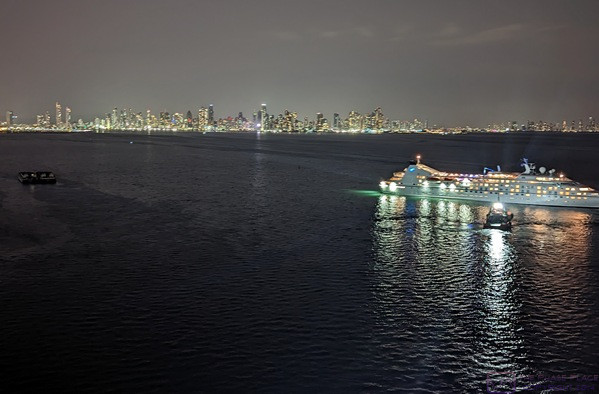
A photo from last night of the other cruise ship next to the NCL Joy just after leaving the dock. It will head around to the right (west) and position itself in the queue to enter the Panama Canal tomorrow morning. (Photo by Linda.)
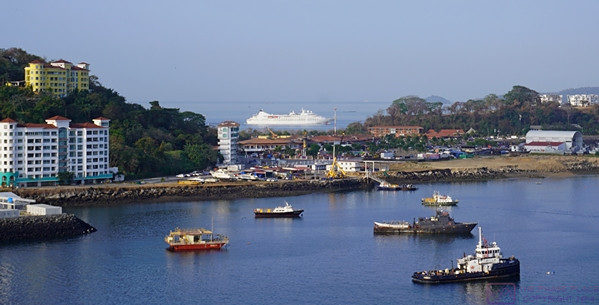
The other cruise ship heading towards the Pacific Ocean entrance to the Panama Canal just before 8 AM for the beginning of its scheduled transit of the Canal. The ship left the dock next to us last evening to queue up in Panama Bay for its transit this morning. A lot of ships move through the Canal every 24 hours, and it’s imperative that ships with reservations arrive at the first lock (at either end) exactly on time.
Panama City was the only port where we stayed overnight; in this case for two nights, before transiting the Panama Canal. This meant that passengers had a chance to go ashore last night and take in the life of the city after sunset. It also meant that passengers (and some crew) had a full day today to explore the area, either on a shore excursion or on their own without fear of not getting back to the ship on time.
Paul and Nancy arranged a private tour of Panama City while we signed up for one of the shorter ship-arranged shore excursions. Our excursion was aboard a motorcoach with an excellent tour guide and focused mostly on the southeastern end of the Canal Zone in Balboa, now a NW suburb of Panama City. (The Panama Canal runs from Panama City northwest to Colón at the other end.) We had read about the history and operation of the Canal in the book Panama Fever (by Matthew Parker) before arriving here, and the history/technology of the Canal was what interested us most about the area. The following, however, is excerpted from the Wikipedia entry “Panama Canal Zone”:
The Panama Canal Zone … was an unincorporated territory of the United States, located in the Isthmus of Panama, that existed from 1903 to 1979. It was located within the territory of Panama, consisting of the Panama Canal and an area generally extending five miles (8 km) on each side of the centerline, but excluding Panama City and Colón. Its capital was Balboa.
The Panama Canal Zone was created on November 18, 1903 from the territory of Panama; established with the signing of the Hay–Bunau-Varilla Treaty, which allowed for the construction of the Panama Canal within the territory by the United States. The zone existed until October 1, 1979, when it was incorporated back into Panama.
In 1904, the Isthmian Canal Convention was proclaimed. In it, the Republic of Panama granted to the United States in perpetuity the use, occupation, and control of a zone of land and land underwater for the construction, maintenance, operation, sanitation, and protection of the canal. From 1903 to 1979, the territory was controlled by the United States, which had purchased the land from its private and public owners, built the canal and financed its construction. The Canal Zone was abolished in 1979, as a term of the Torrijos–Carter Treaties two years earlier; the canal itself was later under joint U.S.–Panamanian control until it was fully turned over to Panama in 1999.
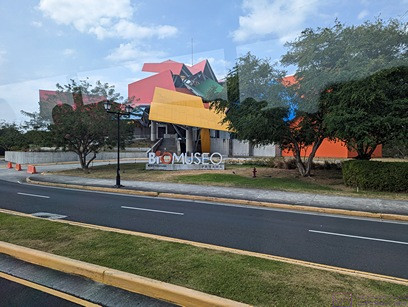
(Photo by Linda.) The Biomuseo (Bio-Museum) building. From the Wikipedia entry “Biomuseo”: “The Biomuseo is a museum focused on the natural history of Panama, whose isthmus was formed very recently in geologic time, with major impact on the ecology of the Western Hemisphere. Located on the Amador Causeway in Panama City, Panama, it was designed by renowned architect Frank Gehry. This is Gehry’s first design for Latin America. The design was conceived in 1999 and the museum opened on 2 October 2014. The Biomuseo highlights Panama’s natural and cultural history, emphasizing the role of humans in the XXI century. Its galleries tell the story of how the rise of the isthmus of Panama changed the world.” …
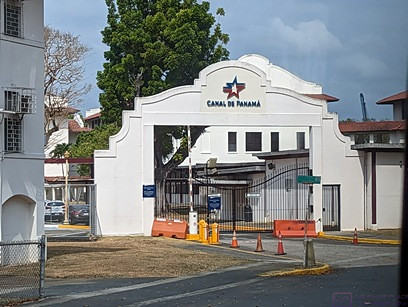
Although no longer under direct US control or military protection, the “Canal Zone” still exists as a highly secured area. This is one of many entrance gates. The lettering on the arch reads “CANAL DE PANAMA”. (Photo by Linda.)
While the long-term goal is to have the Canal operated and maintained by Panamanians, it remains the case today that many of the people operating the canal are US citizens who are also training Panamanians to take over those roles.
Much of our shore-excursion focused on the infrastructure that was built to house the administration, construction, and health care facilities as well as the housing needed by the canal employees, and U.S. military bases and personnel. These facilities remain in use today, some still attached to canal operations while others are being converted into private or other public uses such as housing, schools, and health care facilities.
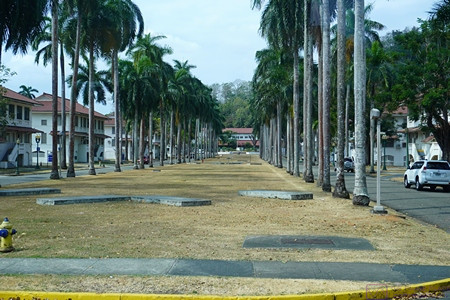
One of the many housing areas in Balboa original built to house the thousands of U.S. workers who oversaw the building and operation of the Canal.
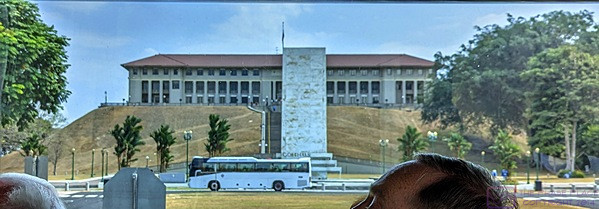
The main administration building of the Panama Canal Company, still in use for its original purpose today by the Panama Canal Authority, part of the Government of Panama. The operation of the Canal is a large, technically complex endeavor, and generates a significant portion of the revenues that flow into the Government of Panama. (Photo by Linda.)
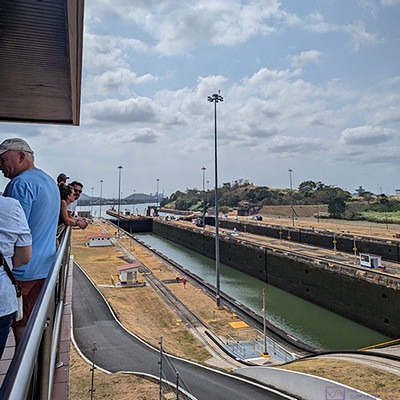
A view of the Miraflores Locks from the Visitor Center observation building, looking back towards the Pacific Ocean. Between the road and the lock basin are the train tracks for the “mules” that control the movement of the ships through these locks. The Miraflores locks are the original ones but are still in use for all but the newest/largest ships, which do not fit the length, width, or draft limitations. The new locks, which accommodate much larger ships, are out of sight to right in this photo. (Photo by Linda.)
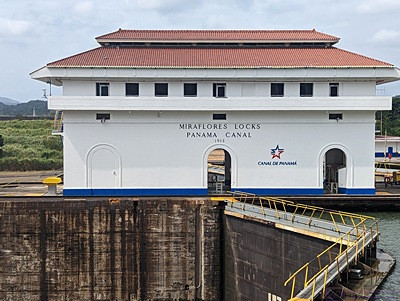
One of the control buildings for the Miraflores Locks. The gates are closed, separating the basin on the left at a low-water level, from the basin on the right at a high-water level. Water flows in and out of these basins by gravity. The gates are only swung open when the water level on both sides is exactly the same. This is conceptually the same technology that was used hundreds of years ago in Great Britain to create the canal system there; although the scale is much larger here. The newer locks (opened in 2016) do not use swinging gates. They use sliding doors (like pocket doors) instead. (Photo by Linda.)
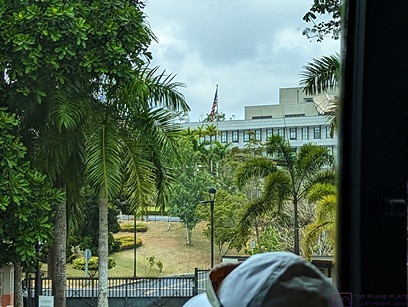
The U.S. Embassy. The Torrijos–Carter Treaties treaty that returned sovereignty of the Panama Canal Zone to Panama as well as primary responsibility for its defense, nevertheless also preserved that right of the USA to intervene militarily if the Canal and its neutral operation (open to ships of all nations) should be threatened at any time in the future. (Photo by Linda.)
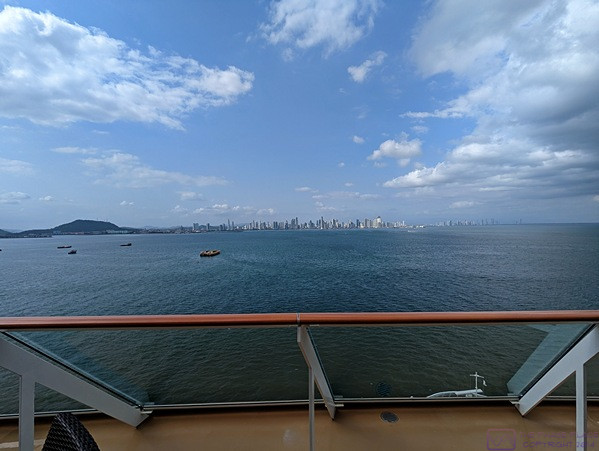
A view of Panama City from the balcony of our stateroom. The Joy remained at the dock until early the next morning, when it departed to queue up for the transit.
…
